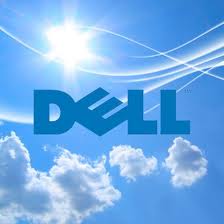According to a filing with the SEC, made public yesterday but filed in May, IBM is cooperating with the SEC in the investigation. IBM has also said that it is sure that the information it provided to the SEC has been consistently accurate.
At this stage there is little more to add on the investigation, but it has always difficult to see where IBM’s reported cloud earnings come from.
This is not due to there being anything to hide, but simply because cloud computing is still a relatively new business and the protocols for reporting results are yet to be established.
For IBM this is an important investigation, as indeed it will be for any company operating in the cloud space.
‘Rigorous’ Reporting Standards
Until now — and in all its quarterly financial reports — IBM consistently lumped all its cloud computing business together so it was impossible to know exactly where the money originated.
However, cited on the Bloomberg financial newswire, Eric Barbini, a spokesman for IBM said it has a “rigorous” process for reporting its revenues:
IBM has robust systems and controls to identify and validate what products and services count as cloud revenue … IBM accounts for cloud transactions exactly the same way as it would account for those transactions if they were not cloud — in accordance with GAAP,” Barbini said.
IBM’s Cloud Business
IBM’s cloud business is big business and getting bigger every quarter. In the last quarterly figures, it shows that its sales were up 70% in the first half of the year and has repeatedly said that by 2015 it wants to be making US$ 7 billion in revenues from the cloud.
Outside of business intelligence and analytics, its acquisitions have focused on developing the cloud business, the most recent, and arguably the most important, last month with the US$ 2 billion acquisition of SoftLayer, which offers businesses the possibility of moving to public, private or hybrid clouds.
But it is not the only player in the market and many of the other big IT companies trying to develop their cloud presence have also been throwing money at acquisitions and technologies.
However, while it may be able to identify what technologies can be described as “cloud” and what are not, it is considerably more difficult to define incomes in the same way.
Does income around the server business that supports cloud computing fall under cloud business or server business? What about storage, or databases that are used in many different IT areas? And how should licensing revenue be included?
IBM is clearly not the only company that will have to clarify these issues and it seems logical that if IBM is going to be investigated, other cloud computing companies will also be in the spotlight.
There is no date set for a ruling on this, or even an estimate as to how long it will take, but hopefully, once it is finished, IT companies will be obliged to offer a little bit more clarity about their cloud business and where the business of the cloud is making money.
According to a filing with the SEC, made public yesterday but filed in May, IBM is cooperating with the SEC in the investigation. IBM has also said that it is sure that the information it provided to the SEC has been consistently accurate.
At this stage there is little more to add on the investigation, but it has always difficult to see where IBM’s reported cloud earnings come from.
This is not due to there being anything to hide, but simply because cloud computing is still a relatively new business and the protocols for reporting results are yet to be established.
For IBM this is an important investigation, as indeed it will be for any company operating in the cloud space.
‘Rigorous’ Reporting Standards
Until now — and in all its quarterly financial reports — IBM consistently lumped all its cloud computing business together so it was impossible to know exactly where the money originated.
However, cited on the Bloomberg financial newswire, Eric Barbini, a spokesman for IBM said it has a “rigorous” process for reporting its revenues:
IBM has robust systems and controls to identify and validate what products and services count as cloud revenue … IBM accounts for cloud transactions exactly the same way as it would account for those transactions if they were not cloud — in accordance with GAAP,” Barbini said.
IBM’s Cloud Business
IBM’s cloud business is big business and getting bigger every quarter. In the last quarterly figures, it shows that its sales were up 70% in the first half of the year and has repeatedly said that by 2015 it wants to be making US$ 7 billion in revenues from the cloud.
Outside of business intelligence and analytics, its acquisitions have focused on developing the cloud business, the most recent, and arguably the most important, last month with the US$ 2 billion acquisition of SoftLayer, which offers businesses the possibility of moving to public, private or hybrid clouds.
But it is not the only player in the market and many of the other big IT companies trying to develop their cloud presence have also been throwing money at acquisitions and technologies.
However, while it may be able to identify what technologies can be described as “cloud” and what are not, it is considerably more difficult to define incomes in the same way.
Does income around the server business that supports cloud computing fall under cloud business or server business? What about storage, or databases that are used in many different IT areas? And how should licensing revenue be included?
IBM is clearly not the only company that will have to clarify these issues and it seems logical that if IBM is going to be investigated, other cloud computing companies will also be in the spotlight.
There is no date set for a ruling on this, or even an estimate as to how long it will take, but hopefully, once it is finished, IT companies will be obliged to offer a little bit more clarity about their cloud business and where the business of the cloud is making money.
Title image courtesy of archerix (Shutterstock)
- Trends in Enterprise Mobile App Development [Infographic]
 view comments
view comments - Gartner MQ for Web Content Management 2013: Adobe, SDL, Sitecore Lead + Market Overview
 view comments
view comments - Social Data Blooming into Social Intelligence
 view comments
view comments - WCM Insights: What Web Content Management Will Look Like by 2017
 view comments
view comments - Google+ Has Highest Impact on SEO Ranking, Report Finds [Infographic]
 view comments
view comments - Microsoft Cutting $150 Off Windows 8 Surface RT Tablet Prices
 view comments
view comments - Think Beyond Responsive Design to the Responsive Experience
 view comments
view comments
Resources
Featured Events View all | Add event |  RSS
RSS
- Aug 7 Webinar: Preparing for the Future of Mobile eCommerce
- Aug 11 SPTech Con Boston 2013
- Aug 13 Webinar: Unifying Around the Customer Experience – Generating Customer Loyalty that Pays
- Aug 14 CMSWire’s August Tweet Jam: The Evolution of SharePoint #EIMChat
- Aug 28 Webinar: 6 Benefits to Hosting Your Website in the Cloud
Who’s Hiring? View all | Post a job |  RSS
RSS
- PHP Web Developer at Planned Parenthood Federation of America
- Digital Paid Health Content Producer at Planned Parenthood Federation of America
- Associate Product Manager, Internal Tools, IS at Planned Parenthood Federation of America
- Sitecore Senior Developer position at Seattle area consulting firm at CoroWare
Are you hiring? Post your job today ($45 for 45 days)!


 Email It
Email It









